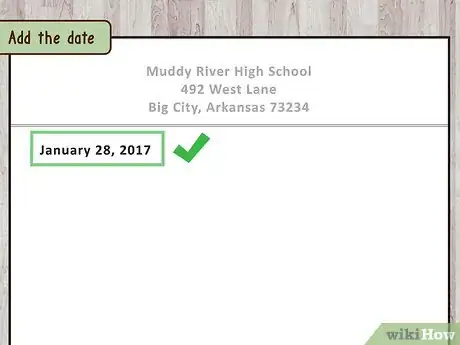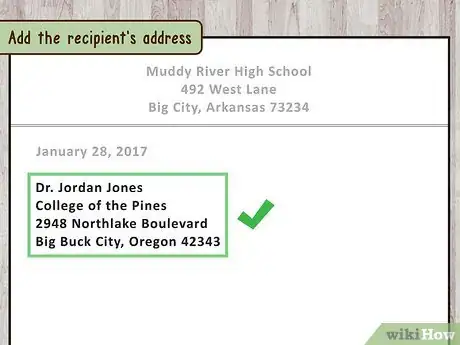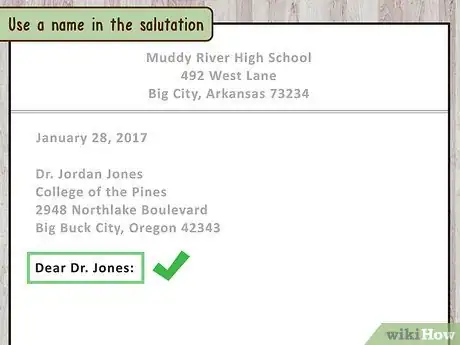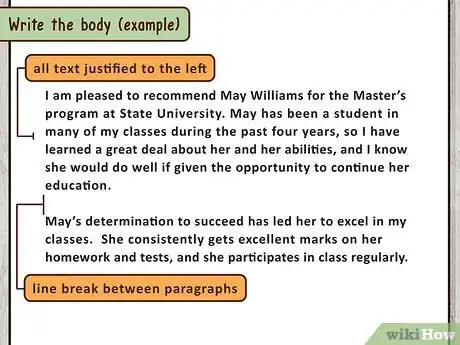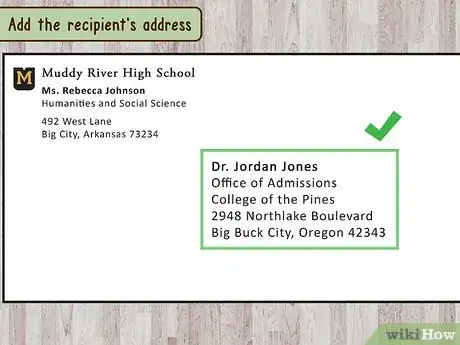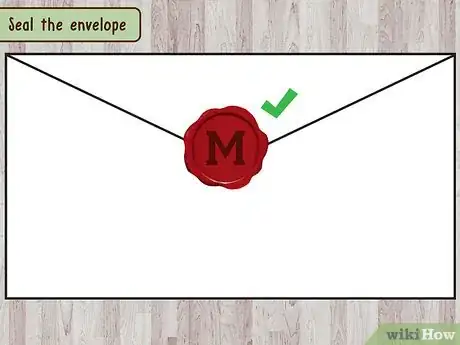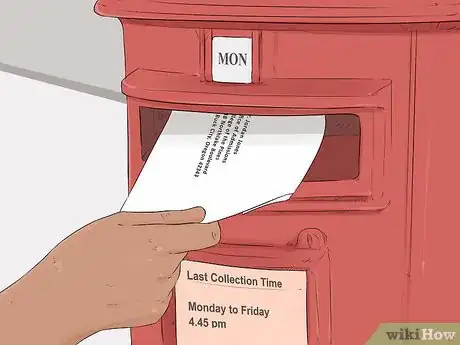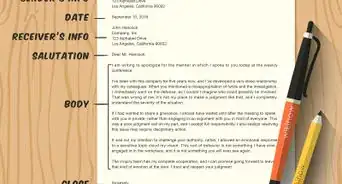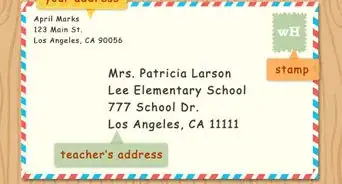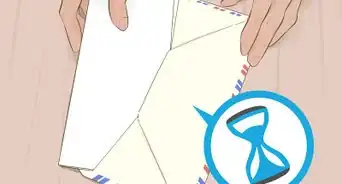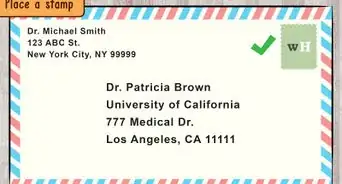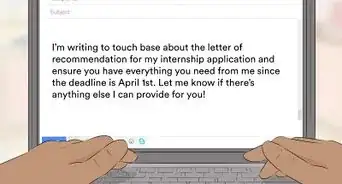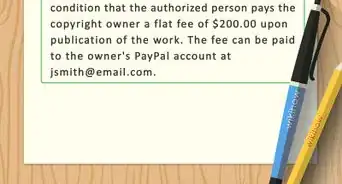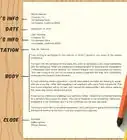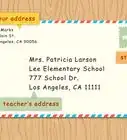This article was co-authored by Alexander Ruiz, M.Ed.. Alexander Ruiz is an Educational Consultant and the Educational Director of Link Educational Institute, a tutoring business based in Claremont, California that provides customizable educational plans, subject and test prep tutoring, and college application consulting. With over a decade and a half of experience in the education industry, Alexander coaches students to increase their self-awareness and emotional intelligence while achieving skills and the goal of achieving skills and higher education. He holds a BA in Psychology from Florida International University and an MA in Education from Georgia Southern University.
There are 13 references cited in this article, which can be found at the bottom of the page.
This article has been viewed 140,856 times.
Most college and university applications have a uniform application system for prospective students. When writing recommendation letters, you'll need to use a format consistent with each school's application.[1] However, if the school doesn't request a standard format, you'll address the letter using a standard business letter format.
Steps
Addressing the Letter
-
1Start with school or professional letterhead. If your current position is relevant to the recommendation, use official letterhead if possible. That is, if you work for a school, use the school letterhead. If you supervise the student at volunteer position, use the nonprofit's letterhead. Doing so creates a sense of authority and makes the letter look more polished.[2]
- If you don't have letterhead with your address, your address goes at the top. You can use the school's address. You don't need to include your name, as that's included at the end of the letter. Just place the school name on one line, the street address on the next line, and the city, state, and zip code on the last line.[3]
- If you are submitting electronically, it's best to start with letterhead.[4]
- It should look like the following address:
Muddy River High School
492 West Lane
Big City, Arkansas 73234
-
2Skip a line and add the date. Leave a line between your address and the date. Write the month out in full, followed by the day of the month, a comma, and the year. In some countries, such as the UK, the day of the month will come before the month.[5]
- The date will look this way: January 28, 2017
- In the UK and other countries, you should write it this way: 28 January 2017
Advertisement -
3Add the recipient's address. Leave a line blank underneath the date. On the next line, place the person's name if you have it. Use "Dr." and other professional titles over "Mr." or "Ms.," but "Mr." or "Ms." is fine if you don't have a title for the person. You can also use "Mrs." and "Miss" if the person shows a preference for one of them, but default to "Ms." if you don't know what they prefer. Add the person's last name next.[6]
- The student should supply you with a list of addresses. If they don't, reach out to them to get addresses. Also, it's up to you whether you want to put the recipient's address on the letter when submitting electronically. If you don't, you'll just have the letterhead, the date, and the salutation.[7]
- Under the person's name, place the school's name and then the street address. Below that, add the city, state, and zip code.
- If you don't know the name, you can use "Admission's Office" and the name of the school underneath it.
- The address should look like this example:
Dr. Jordan Jones
College of the Pines
2948 Northlake Boulevard
Big Buck City, Oregon 42343
-
4Use a name in the salutation. If at all possible, it's best to use a name in the salutation.[8] Address him or her professionally by writing "Dear," followed by "Mr.," "Ms.," or "Dr." and the person's last name. Add a colon after the person's last name.[9]
- If you don't know the person's gender, you can either use a title (such as Dean) or the person's full name in place of "Mr." or "Ms."
- The salutation should look like the following example: Dear Ms. Jones: or Dear Dr. Jones:
- Alternatively, you could write one of the following: Dear Jordan Jones: or Dear Dean Jones:
- Use "To Whom It May Concern" followed by a colon if you don't have a name.
-
5Write the body of the letter. After addressing the college recommendation letter, write the letter in support of the individual applying to college. Keep all text justified to the left, and use a line break between paragraphs.
Writing the Envelope
-
1Use a letterhead envelope. Just like with the letter, it's best to use professional letterhead if you have it. A pre-printed envelope looks more polished and authoritative than just a handwritten or even a typed envelope.[10]
- If you don't have a letterhead envelope, place your address in the upper left-hand corner, starting with your name on the first line, followed by the rest of the address on the next lines:
Ms. Rebecca Johnson
Muddy River High School
492 West Lane
Big City, Arkansas 73234
- If you don't have a letterhead envelope, place your address in the upper left-hand corner, starting with your name on the first line, followed by the rest of the address on the next lines:
-
2Add the recipient's address. The recipient's address should go over to the right on the envelope, centered from top to bottom. Start with the recipient's name. If you don't know the person's name, start with the office, such as the Office of Admissions, followed by the school's name and the rest of the address on the next lines.[11]
- The address should look like the following example: Dr. Jordan Jones
Office of Admissions
College of the Pines
2948 Northlake Boulevard
Big Buck City, Oregon 42343
- The address should look like the following example: Dr. Jordan Jones
-
3Seal the envelope. Often, a school will require you to seal and sign the envelope to verify that you wrote it. That just means that you sign it over the sealed edge of the envelope before sending it or giving it to the student to send.[12]
-
4Mail the letter on time. Know the deadline for the letter, and make sure you send it in on time or give it to the student. Missing the deadline could mean the student will be rejected for that school.[13]
- Some schools will allow you to fax or email the letter. Check with the student to see if that's appropriate.[14]
Community Q&A
-
QuestionWhat is the best closing for a letter of recommendation for a student?
 Community AnswerStay professional. "Sincerely" is a classic choice.
Community AnswerStay professional. "Sincerely" is a classic choice. -
QuestionHow do you address a letter of recommendation for a former employee if you don't know who specifically it is going to?
 Community AnswerYou can either use a generic greeting (To Whom It May Concern) or a greeting addressed to the committee or organization (Dear Admissions Office).
Community AnswerYou can either use a generic greeting (To Whom It May Concern) or a greeting addressed to the committee or organization (Dear Admissions Office).
References
- ↑ Alexander Ruiz, M.Ed.. Educational Consultant. Expert Interview. 18 June 2020.
- ↑ https://owl.english.purdue.edu/owl/resource/982/02/
- ↑ https://www.hunter.cuny.edu/rwc/repository/files/business-and-professional-writing/business_letter_handout-major-rev.pdf
- ↑ https://www.e-education.psu.edu/writingrecommendationlettersonline/node/118
- ↑ https://writing.wisc.edu/handbook/assignments/businessletter/
- ↑ https://web.mit.edu/course/21/21.guide/letters.htm
- ↑ https://www.e-education.psu.edu/writingrecommendationlettersonline/node/118
- ↑ https://mitadmissions.org/apply/parents-educators/writingrecs/
- ↑ https://www.govinfo.gov/content/pkg/GPO-STYLEMANUAL-2008/pdf/GPO-STYLEMANUAL-2008-10.pdf/
- ↑ https://brand.msu.edu/stationery
- ↑ https://gsi.berkeley.edu/media/PROF-DEVELOPMENT-sample-recommendation-letter.pdf
- ↑ https://applications.wes.org/onlineapp/pdf/International_Transcript_Request.pdf
- ↑ https://uncw.edu/d2la/recognize/documents/samplenominationletter.pdf/
- ↑ https://admissions.cofc.edu/applyingtothecollege/freshmen/partsoftheapplication.php


